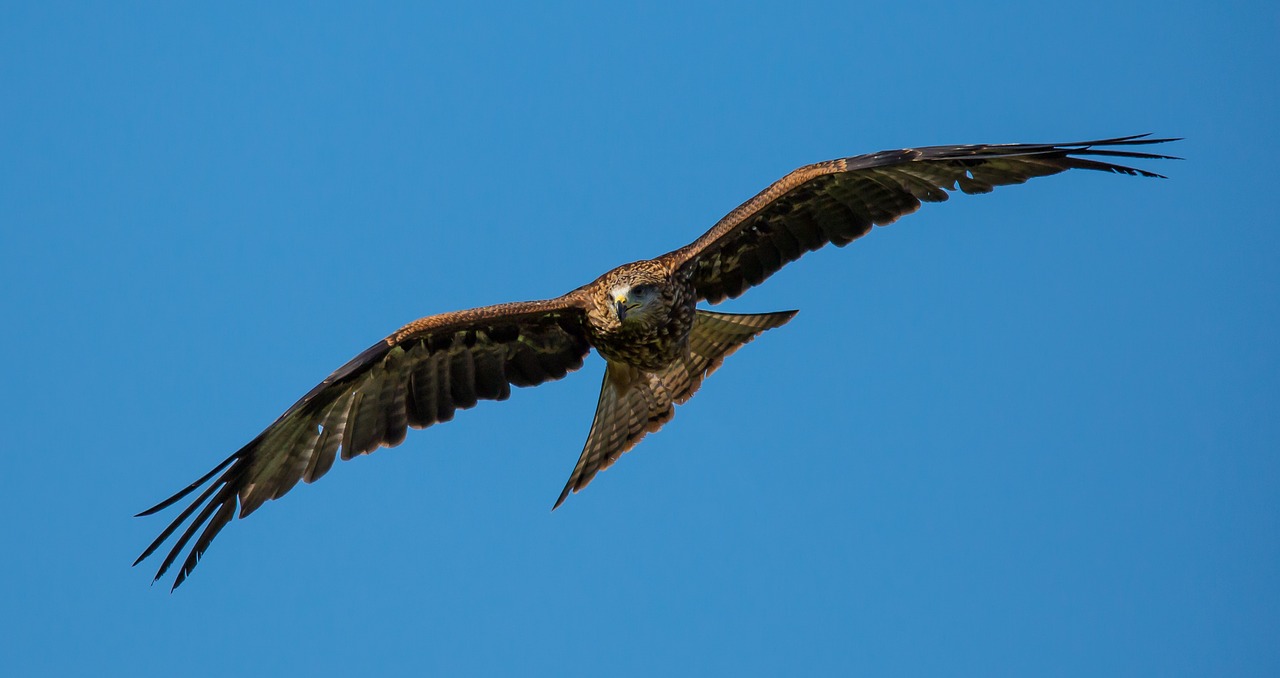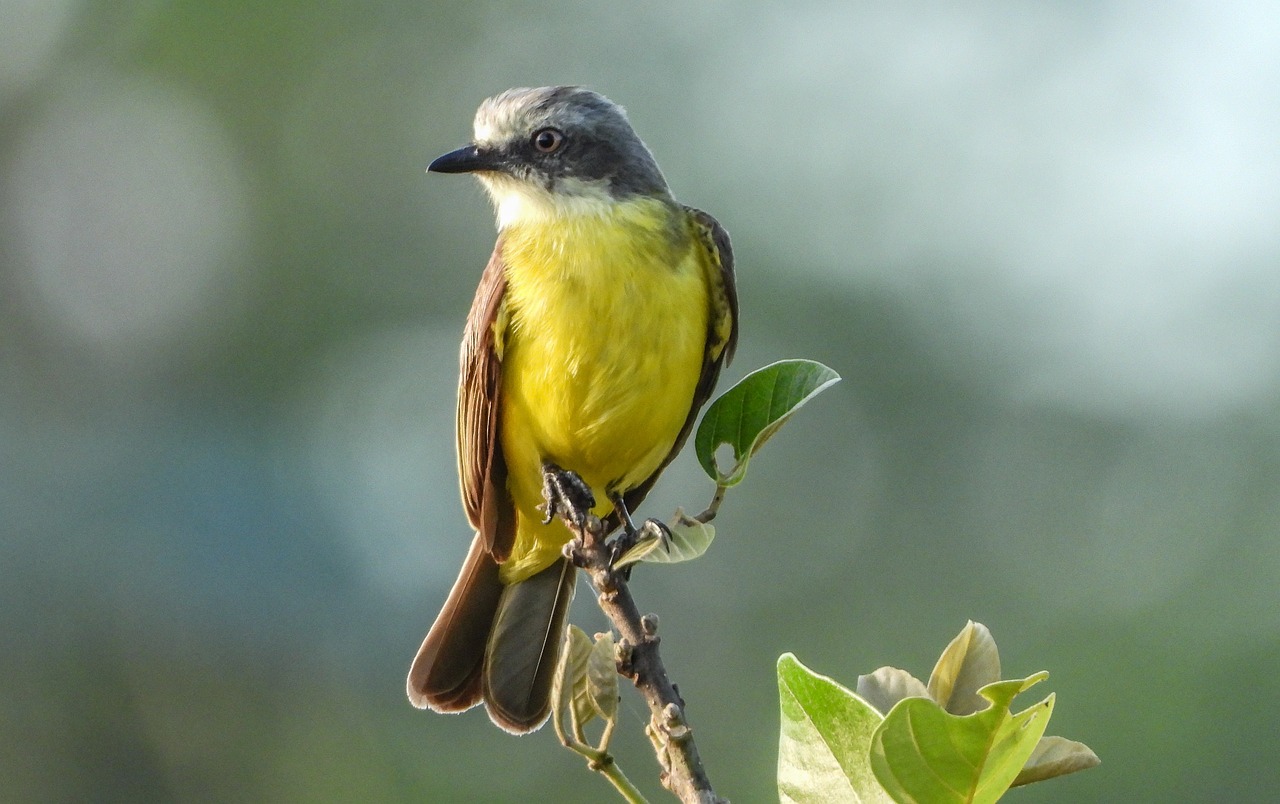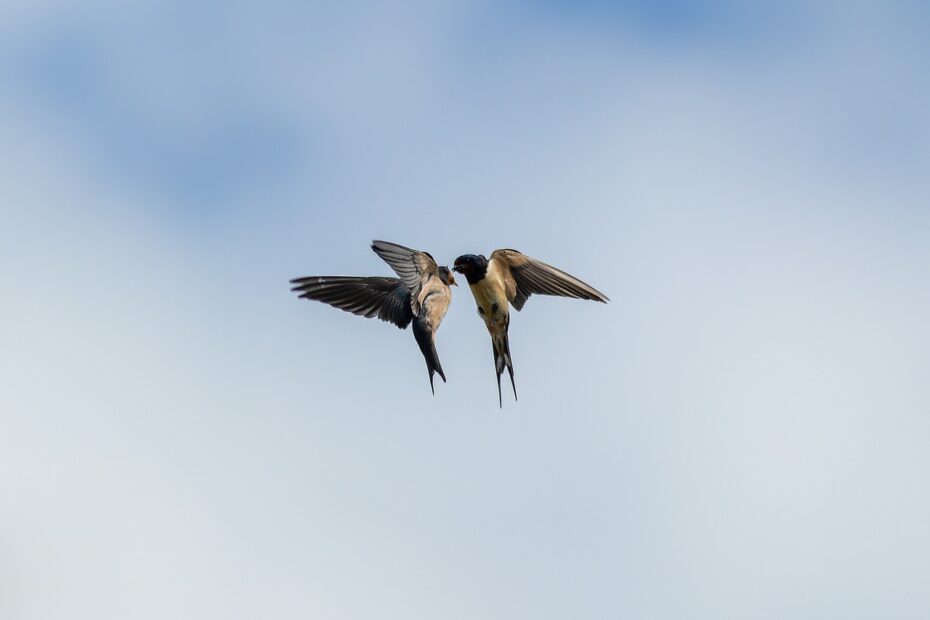Birds with forked tails have captivated the curiosity of naturalists and bird enthusiasts for centuries. The elegance and grace of these birds in flight, combined with their unique tail structure, make them a captivating subject of study. In this article, we will explore the evolutionary adaptations, types, functions, habitats, and various other aspects of birds with forked tails.
You may also want to read about purple martin birds.
Evolutionary Adaptations
The evolution of forked tails
Birds with forked tails have evolved through the process of natural selection over millions of years. This distinctive tail shape has emerged as an advantageous trait, providing benefits in terms of flight efficiency and maneuverability.

Advantages and benefits of forked tails
Forked tails offer several advantages to birds. Firstly, they enhance aerodynamic performance, allowing birds to achieve greater speeds and maneuverability in flight. The forked shape minimizes drag, enabling precise aerial movements. Additionally, the forked tail aids in stability during flight, especially in challenging conditions such as high winds.
Types of Birds with Forked Tails
Several bird species exhibit forked tails. Let’s explore some of the most notable ones:
Swallows
Swallows are renowned for their distinctive forked tails and agile flight. These migratory birds are found in various parts of the world, including North and South America, Europe, Africa, and Asia. Swallows are known for their remarkable aerial acrobatics and their ability to catch insects on the wing.
Tropicbirds
Tropicbirds, found in tropical and subtropical regions, possess long, deeply forked tails. These graceful birds are known for their stunning aerial displays and striking plumage. Tropicbirds spend a significant amount of time flying over the open ocean, using their forked tails to navigate and catch their prey.
Fork-tailed Flycatchers
Fork-tailed Flycatchers are small passerine birds known for their striking black and white plumage and deeply forked tails. These birds primarily inhabit South America and are known for their unique courtship displays, where males perform intricate aerial dances to attract mates.
Kites and Hawks
Several species of kites and hawks also possess forked tails. These raptors use their forked tails to enhance their hunting capabilities, allowing them to make precise turns and sudden changes in direction while pursuing prey. Species like the Swallow-tailed Kite and the White-tailed Kite showcase the advantages of forked tails in aerial hunting.
Function and Purpose of Forked Tails
The forked tails of these birds serve multiple functions:
Aerodynamic advantages
The forked tail shape reduces drag and turbulence, allowing birds to achieve greater speeds and maneuverability. This aerodynamic advantage is especially crucial for birds that engage in aerial pursuits, such as capturing prey on the wing or evading predators.
Improved maneuverability
The forked tail structure provides birds with enhanced agility, enabling them to navigate through dense vegetation, intricate flight patterns, and sharp turns with ease. This adaptability is vital for birds that frequent forests, woodlands, and other complex habitats.
Display and courtship
Forked tails often play a crucial role in courtship displays. Male birds use their impressive aerial maneuvers and the elegant display of their forked tails to attract mates. The elaborate dances and acrobatics showcase the male’s strength, agility, and overall fitness, making them more appealing to potential partners.
Habitat and Distribution
Birds with forked tails can be found in diverse habitats across the globe. These birds have adapted to various environments and ecosystems, each with its own unique set of challenges. Some species prefer open grasslands, while others thrive in dense forests, coastal regions, or even oceanic islands.
Geographically, forked-tailed birds can be found in different parts of the world, including the Americas, Europe, Africa, Asia, and the Pacific Islands. Each region showcases its own array of species, highlighting the adaptability and diversity of birds with forked tails.

Diet and Feeding Habits
The diet of birds with forked tails varies depending on the species and their preferred habitat. However, the majority of these birds are insectivorous, feeding on a wide range of flying insects. Their agile flight and forked tails enable them to catch prey mid-air with precision.
Some species, such as certain swallows, have adapted to feed on aerial plankton, which they capture while flying over bodies of water. Others may supplement their diet with small fish, crustaceans, or even fruits and seeds, depending on their specific ecological niche.
Reproduction and Breeding
Birds with forked tails exhibit fascinating mating rituals and breeding behaviors. These rituals often involve elaborate displays and vocalizations to attract mates. The male birds perform intricate aerial dances, showcasing their forked tails and other remarkable features to court females.
Once a pair has formed, birds with forked tails construct nests in various locations, including cliffs, trees, burrows, or man-made structures. The female typically lays a clutch of eggs, which are incubated by both parents. The duration of the incubation period and the number of offspring vary among species.
Threats and Conservation
Birds with forked tails face numerous threats in their natural habitats. Human activities, such as deforestation, habitat degradation, pollution, and climate change, pose significant challenges to the survival of these species. Loss of suitable nesting sites and a decrease in food availability can impact their population numbers.
Conservation efforts are crucial for the long-term survival of birds with forked tails. Many organizations and researchers work diligently to protect their habitats, raise awareness, and implement measures to mitigate the threats they face. It is essential to conserve these species and their habitats to maintain the delicate balance of ecosystems.
Birdwatching and Enjoying Forked-Tailed Birds
Birdwatching offers a wonderful opportunity to observe and appreciate birds with forked tails in their natural habitats. Here are a few tips to enhance your birdwatching experience:
- Research birdwatching hotspots known for their forked-tailed bird populations.
- Familiarize yourself with the appearance, behavior, and vocalizations of different species.
- Use binoculars or a spotting scope to get a closer look at these birds in flight.
- Stay patient and observant, as forked-tailed birds can be elusive and may require time to spot.
- Join local birdwatching groups or participate in guided tours to learn from experienced enthusiasts.
Cultural Significance
Birds with forked tails have often held cultural significance in various societies throughout history. They have inspired folklore, art, and literature, symbolizing different concepts such as freedom, elegance, and agility.
In folklore and mythology, these birds are sometimes associated with messages from the spiritual realm or are seen as messengers of good fortune. They have been featured in art and literature across cultures, captivating the imaginations of artists, writers, and poets alike.
Case Study: Swallows
Swallows are a prime example of birds with forked tails. These agile and graceful birds have captured the admiration of humans for centuries. Swallows are known for their swift flight, intricate nests, and long-distance migrations.
Their forked tails contribute significantly to their flight capabilities, allowing them to perform acrobatic aerial maneuvers and catch insects mid-air with remarkable precision. Swallows undertake extensive migrations, covering thousands of kilometers each year, showcasing their remarkable endurance and navigational abilities.
Case Study: Tropicbirds
Tropicbirds are a group of beautiful seabirds known for their elongated, deeply forked tails. These birds inhabit tropical and subtropical regions and spend much of their time soaring over the open ocean. Their forked tails assist them in maneuvering through the winds and currents, making them adept at catching flying fish and other small prey.
The elegant flight patterns of tropicbirds, coupled with their vibrant plumage and striking tail feathers, make them a remarkable sight for birdwatchers and nature enthusiasts.
Case Study: Fork-tailed Flycatchers
Fork-tailed Flycatchers are small passerine birds found primarily in South America. These charismatic birds are easily recognizable by their black and white plumage and deeply forked tails. During the breeding season, male flycatchers perform intricate aerial displays, showcasing their agility and tail feathers to attract mates.
These birds are known for their aerial hunting skills, catching insects on the wing with remarkable precision. Their forked tails aid in their ability to make sharp turns and sudden changes in direction while in pursuit of prey.
Case Study: Kites and Hawks
Several species of kites and hawks display forked tails, demonstrating the advantages of this tail structure in aerial hunting. These raptors rely on their keen eyesight and remarkable flight capabilities to locate and capture their prey.
The Swallow-tailed Kite, for example, exhibits a deeply forked tail, which aids in maneuvering through dense forests while chasing prey. White-tailed Kites also possess forked tails, enabling them to perform agile flight maneuvers and capture small mammals and birds.
Conclusion
Birds with forked tails represent a captivating group of avian species that have evolved remarkable adaptations over time. Their forked tails offer advantages in terms of flight efficiency, maneuverability, and courtship displays. From swallows to tropicbirds, each species showcases unique traits and behaviors, highlighting the diversity and beauty of these birds.
As we continue to study and appreciate birds with forked tails, it becomes increasingly important to protect their habitats and ensure their survival. Conservation efforts and responsible birdwatching practices can help us maintain the delicate balance of ecosystems and preserve these remarkable avian creatures for generations to come.
FAQs
Q: Can birds with forked tails fly faster? A: Birds with forked tails possess enhanced aerodynamic capabilities, which allow them to achieve greater speeds and maneuverability in flight. While speed can vary among species, their forked tails contribute to improved flight performance.
Q: Do all birds with forked tails have similar aerodynamic advantages? A: While forked tails provide aerodynamic benefits, the extent of these advantages may differ among species. Factors such as tail shape, wing morphology, and flight style can influence the specific benefits that birds with forked tails experience.
Q: How can I attract forked-tailed birds to my garden? A: To attract forked-tailed birds to your garden, provide suitable nesting sites such as birdhouses or structures with ledges. Offering a diverse range of food sources, including insects and fruits, can also attract these birds. Consult local birdwatching resources or experts for specific recommendations based on the species found in your area.
Q: Are forked tails a sign of good health in birds? A: Forked tails are not necessarily an indicator of an individual bird’s health. The presence of a forked tail is a characteristic of certain species and is primarily determined by their evolutionary adaptations and genetic makeup.
Q: Do all birds with forked tails migrate? A: Not all birds with forked tails migrate. While some species, like swallows, are known for their long-distance migrations, others may exhibit resident or localized migratory patterns. Migration behavior varies among species and is influenced by factors such as food availability, breeding requirements, and climate conditions.
